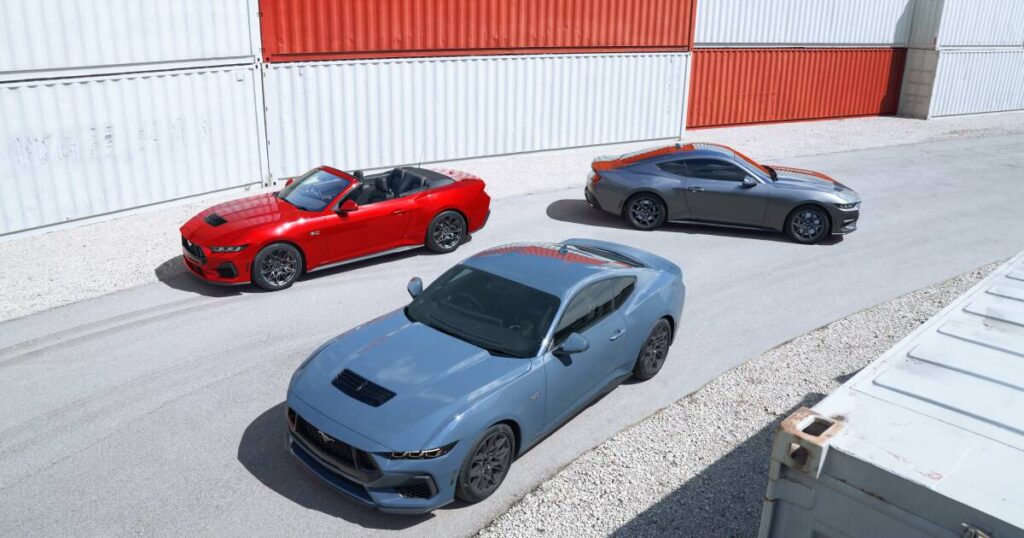
The Ford Mustang, an emblem of American automotive prowess, is reportedly set to adopt hybrid technology as emissions regulations increasingly threaten its traditional powertrain. Reports from the United States suggest that Ford is developing a hybrid version of the current S650 generation Mustang, codenamed ‘S650E’, with prototypes already reaching the ‘prove-out stage’.
This development comes at a time when the Mustang, known for its powerful 5.0-litre V8 engine, faces mounting pressure from stringent global emissions standards. The iconic sports car, which also offers a four-cylinder turbocharged petrol engine, must adapt to survive in an era prioritizing environmental sustainability.
The Hybrid Transition: A Strategic Move
According to Ford Authority, the hybrid Mustang could follow in the footsteps of the Porsche 911, another legendary sports car that embraced hybrid technology in 2024. The 911 hybrid retained its signature ‘flat’ six-cylinder petrol engine while integrating Porsche’s ‘T-Hybrid’ technology, which includes an electric turbocharger to reduce emissions without sacrificing performance.
Similarly, the Mustang’s transition to hybrid power aims to preserve its storied 5.0-litre V8 engine, a feature celebrated in popular culture, including Vanilla Ice’s 1991 hit, “Rollin’ in my 5.0”. Hybrid technology could extend the life of this beloved engine by balancing performance with environmental considerations.
Global and Local Implications
Ford’s move towards hybridization is not isolated. In Australia, the company has already introduced a plug-in hybrid (PHEV) version of its best-selling Ranger dual-cab ute, utilizing the same 2.3-litre turbocharged four-cylinder engine found in the Mustang EcoBoost. This strategy reflects a broader industry trend towards electrification as automakers grapple with evolving emissions legislation.
In 2025, Australia will implement the New Vehicle Efficiency Standard (NVES), mandating annual reductions in new-vehicle CO2 emissions through 2029. This regulation represents a significant challenge for Ford, as the Mustang, the world’s best-selling sports car in 2024, must conform to these standards to avoid financial penalties.
In July, Ford Australia increased the price of every Mustang model by $5000, citing the NVES as a contributing factor, with an additional $1000 rise confirmed for 2026 models expected to arrive in February.
Economic and Environmental Considerations
The price hikes are part of Ford’s strategy to counter potential fines for exceeding emissions levels, which will be enforced starting July 1, 2025. These fines are calculated based on the average CO2 emissions across all vehicles sold by an automaker, posing a particular challenge for Ford, whose best-selling models, the Ranger and Everest, are predominantly diesel-powered.
Currently, the Australian-spec Mustang GT coupe automatic has a combined carbon-dioxide (CO2) emissions figure of 293g/km, a statistic described as “worse than average” by the Australian government’s Green Vehicle Guide. This underscores the urgency for Ford to innovate and adapt its product lineup to meet regulatory demands.
Looking Ahead: The Future of the Mustang
The introduction of a hybrid Mustang represents a pivotal moment for Ford as it navigates the complex landscape of modern automotive manufacturing. By embracing hybrid technology, Ford aims to preserve the Mustang’s legacy while aligning with global efforts to reduce carbon emissions.
As the automotive industry continues to evolve, the Mustang’s transition could serve as a blueprint for other manufacturers balancing heritage with innovation. The success of this hybrid model may well determine the future direction of Ford’s performance vehicles and their ability to thrive in an increasingly eco-conscious world.
With the hybrid Mustang on the horizon, enthusiasts and environmental advocates alike will be watching closely to see how this iconic sports car adapts to the demands of the 21st century.





